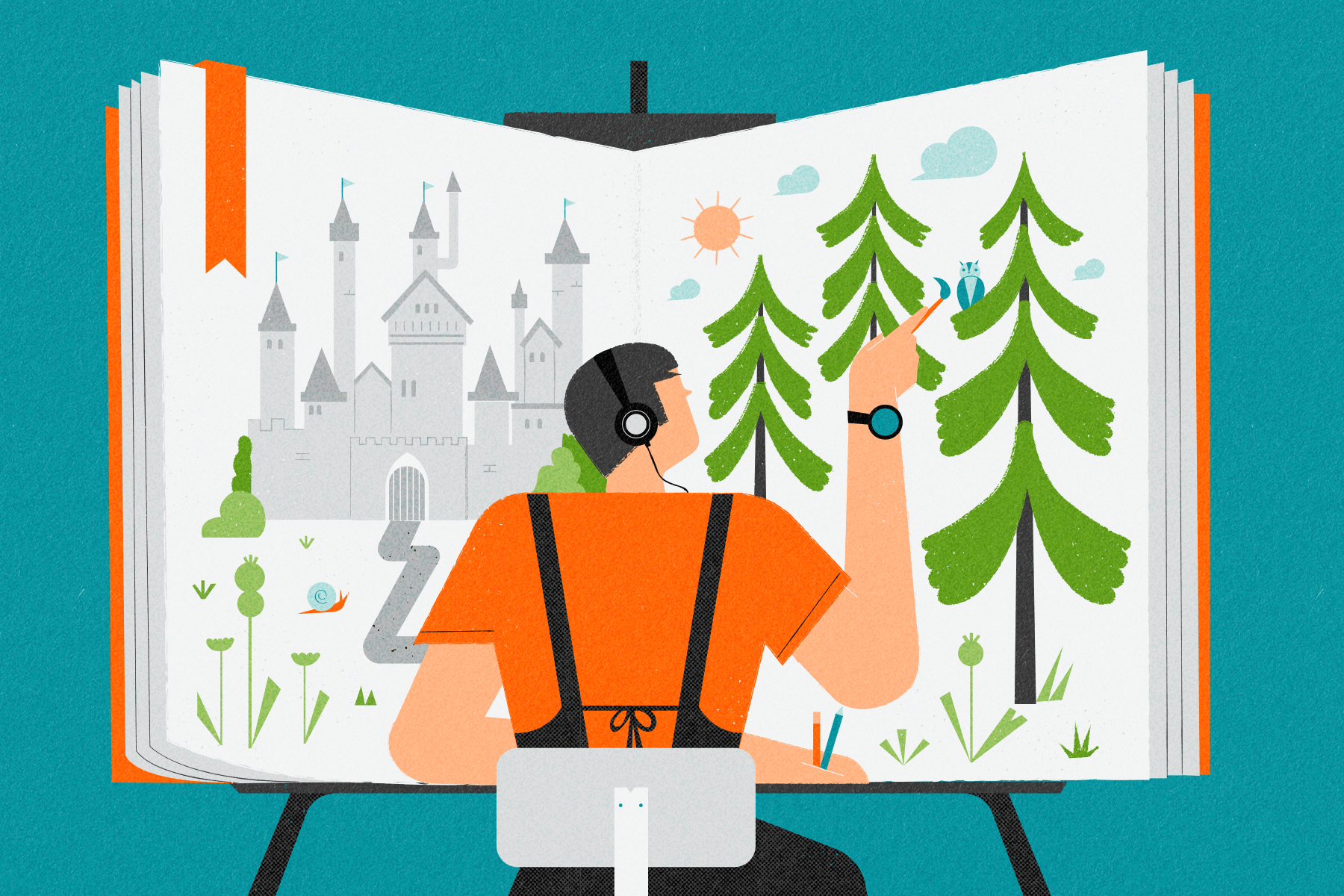
- Home
- About
- Company articles
- How to become a book illustrator
Asked to think about some of the most famous children’s books in the world - from Allan and Janet Ahlberg’s Funnybones to Nadia Shireen’s Billy and the Beast - many people will immediately picture the books’ distinctive illustrations first.
Children’s picture books can be key to the work of illustrators, but there are many different types of book illustration, all of which are important in the life of a book. These include full cover illustrations in colour for fiction titles, mono illustrations throughout the text or chapter header art for younger titles, and full colour art throughout for a picture book.
How does an art department find an illustrator they want to work with?
Ben Hughes, deputy art director at Puffin, says that it’s his job to “find the appropriate style for a particular title/author/genre and book - whether it be fiction, picture book, non-fiction”.
'When searching for something particular or new, we tend to search Instagram, Twitter and sites such as Behance. We also attend degree exhibitions'
Ben has relationships with agencies and artists directly, but also searches for new talent in a variety of places: “When searching for something particular or new, we tend to search Instagram, Twitter and sites such as Behance. We also attend degree exhibitions.
“In children’s fiction we are always looking for new talents and styles with a commercial side to their art. The aim is to create a cover that looks different to everything else on the book shelf.”
Illustrators should be armed with a portfolio of work, which Ben says should be regularly updated with recent work. If an illustrator is new to the industry and hasn’t yet been commissioned for any work, he has tips for what to include: “If a new illustrator is trying to get their first job, I think one of the best things to do is self-initiated covers - your own take on a series or a classic. Try different genres to show off your range.”
Create your portfolio around your original style
Illustrator Nadia Shireen says a portfolio should only contain work you feel proud of. “Include stuff that reflects what you genuinely enjoy drawing, don’t try to copy styles or illustration trends too slavishy,” she advises.
“We’re all influenced by each other and that’s important and great, but you’re hopefully also showing off your natural tendencies so you get projects that suit you and which you enjoy.
"Make sure you’re not including too much of the same thing, and remember what publishers will really want to see examples of.
“Publishers and agents like to see that you can draw children. Some black and white pieces are good if you want to work in middle grade or older fiction too. And seeing movement – characters actively doing something as opposed to just posing statically, is also a good idea to include.”
How much freedom do you get as the illustrator?
Book illustration is a partnership between the art department and illustrator. If you’ve been chosen for a project, it’s because you fit within the vision the art department have set, and there’s a trust there.
For Charlie Changes Into a Chicken Ben loved Sarah Horne’s interpretation straight away. “The Charlie she created was just perfect, I don't think we even changed him.
“I had given her bits of text and rough descriptions and then told her how when the character of Charlie stresses, he turns into an animal, but he has no control over what animal he changes into. She was the only person who added parts of Charlie to the animal. So as the flea, he's got the same hairstyle, the snake's pattern is his jumper's pattern. It’s brilliant.”
Can I earn a living as a book illustrator?
“With books it’s likely to take a number of years before you have a liveable income – based on doing two or three books a year, and illustrators should know it’s likely a two-year lead time between signing and a project coming out,” says illustrator agent Jodie Hodges. Illustrators do receive royalties, but it can take some time for those to come in.
Make sure the publisher is being open and honest at every stage of the process. At the consideration point, publishers may ask illustrators to do sample work for them, but this should be paid. “If they are a serious publisher, and you’re a serious contender, that shouldn’t be a problem,” says Nadia.
Ben says samples are usually sought for a big project where a publishing team is undecided on the artist they want to approach. "We will always offer a small fee for the work - but have to be careful in doing so as it eats out of a limited art budget. When dealing with pitches we are always very transparent.”
Sarah Horne says persistence is key, "If you keep going for long enough, put in the hours, there’s a day that sort of sneaks up on you... Suddenly work is regular, it’s fulfilling creatively, you are earning a living from it, and there is recognition of your skill and hard graft.
Yet so much of the outward success is a result of what happens below the water level, below the tip of the iceberg. Practice as an illustrator is always in development, times change and tastes change… I think it’s healthy creatively to be looking at what’s next, experimenting and honing what you know to do. Creatively, I don’t think we ever really stop."
Nadia agrees, “If you can focus on developing your own visual language, it will be authentic and hopefully chime with other people.”
Now you know what it's like to be a book illustrator, read more about perfecting your portfolio and how to get an illustration agent.
Illustration: Mike Ellis for Penguin